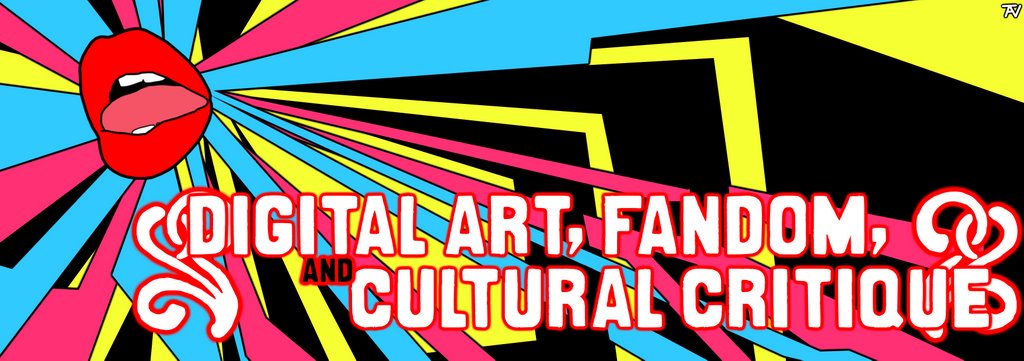
Fan art raises several distinguishable and fundamental questions about copyrights and the legal status of fan art. Particularly, is the use of characters from the original media, particularly trademarked ones, a breach of copyright law? And is the selling of such art legal? The key issue revolves around the capacity of the internet to make globally accessible much fan content that would otherwise be limited in its public exposure: ‘individuals may distribute those digital works around the world at the speed of light’ (Ku, 264). For some academics, copyrights should permeate ‘into every corner where consumers derive value from literary and artistic works’, ultimately leading to a ‘celestial jukebox’ where individuals can access materials on a pay-per-use basis (Goldstein, 236), while others believe that ‘exceptions to copyright should be recognised under the fair use doctrine for certain uses of digital information’ particularly in light of specific public interests, such as scholarship and other productive uses of information (Ku, 265).
But the law as it stands today is unclear. In the US, fan art generally falls into the category of ‘derivative work’, unless it is a direct reproduction, rather than a unique piece that simply incorporates aspects from a previous work. The broad, hazily defined ‘fair use’ statutory exemption allows for the production, display and distribution of such work. In Australia, the Copyright Act 1968 (Cth) has not been clarified by the courts with regard to the appropriate sections. An exception to artworks in a public place may mean fan art is legal, if we consider the virtual public space to be a ‘public place’. However, Patricia Search suggests that ‘[throughout] history, artists have incorporated imagery created by others into their work’ (Search, 193), although not without comment and threat of legal action. Moreover, the cases mentioned by Search indicate the second artwork was substantially and thematically different from the first, whereas fan art is by its nature irrevocably tied to its inspiration. And since today’s society is ‘media-saturated’ to the extent that ‘actual objects, people and activities often symbolise commercial interests’, it would be unsurprising to find digital artists who appropriate work ‘caught in an unforgiving web of intellectual property battles’ (Search, 194).
The law is similarly inconclusive on the sale of fan art for profit. Under US law, even derivative works are not to be sold for profit, and nothing is said on the matter in Australian law. If it is presumed illegal for fans to sell art derived from another media, then there are possibly serious consequences for the selling of fan art, especially as done by websites like DeviantArt, which allows for the purchase of prints if the author so allows. In the case of DeviantArt, where at least 2,059 artwork prints on Naruto can be ordered, the possible legal difficulties are significant. If, however, the selling of fan art is legal, there remain moral questions regarding the use of ‘poached fragments’ (Jenkins, 232) of other media in the manner that fan art generally does.
Ultimately, Search summarises it best when she writes: ‘[copyright] law needs to change in order to clarify existing legal ambiguities concerning the creation and dissemination of electronic information’ (Search, 194). Copyright law needs to adapt to the transmutability of informations and texts in the digital age, and look closely at works that borrow strongly from other works, as fan art does.
But the law as it stands today is unclear. In the US, fan art generally falls into the category of ‘derivative work’, unless it is a direct reproduction, rather than a unique piece that simply incorporates aspects from a previous work. The broad, hazily defined ‘fair use’ statutory exemption allows for the production, display and distribution of such work. In Australia, the Copyright Act 1968 (Cth) has not been clarified by the courts with regard to the appropriate sections. An exception to artworks in a public place may mean fan art is legal, if we consider the virtual public space to be a ‘public place’. However, Patricia Search suggests that ‘[throughout] history, artists have incorporated imagery created by others into their work’ (Search, 193), although not without comment and threat of legal action. Moreover, the cases mentioned by Search indicate the second artwork was substantially and thematically different from the first, whereas fan art is by its nature irrevocably tied to its inspiration. And since today’s society is ‘media-saturated’ to the extent that ‘actual objects, people and activities often symbolise commercial interests’, it would be unsurprising to find digital artists who appropriate work ‘caught in an unforgiving web of intellectual property battles’ (Search, 194).
The law is similarly inconclusive on the sale of fan art for profit. Under US law, even derivative works are not to be sold for profit, and nothing is said on the matter in Australian law. If it is presumed illegal for fans to sell art derived from another media, then there are possibly serious consequences for the selling of fan art, especially as done by websites like DeviantArt, which allows for the purchase of prints if the author so allows. In the case of DeviantArt, where at least 2,059 artwork prints on Naruto can be ordered, the possible legal difficulties are significant. If, however, the selling of fan art is legal, there remain moral questions regarding the use of ‘poached fragments’ (Jenkins, 232) of other media in the manner that fan art generally does.
Ultimately, Search summarises it best when she writes: ‘[copyright] law needs to change in order to clarify existing legal ambiguities concerning the creation and dissemination of electronic information’ (Search, 194). Copyright law needs to adapt to the transmutability of informations and texts in the digital age, and look closely at works that borrow strongly from other works, as fan art does.


No comments:
Post a Comment